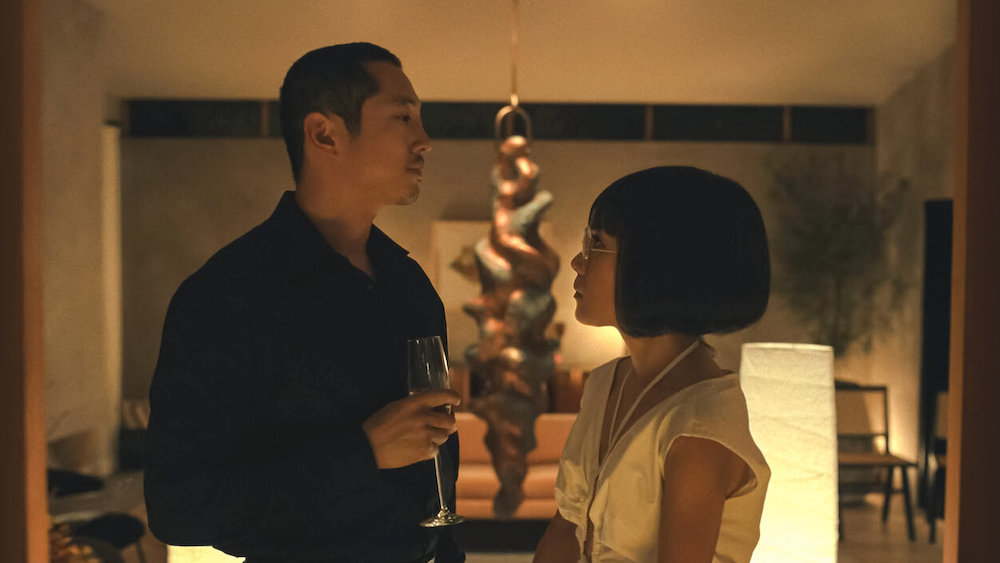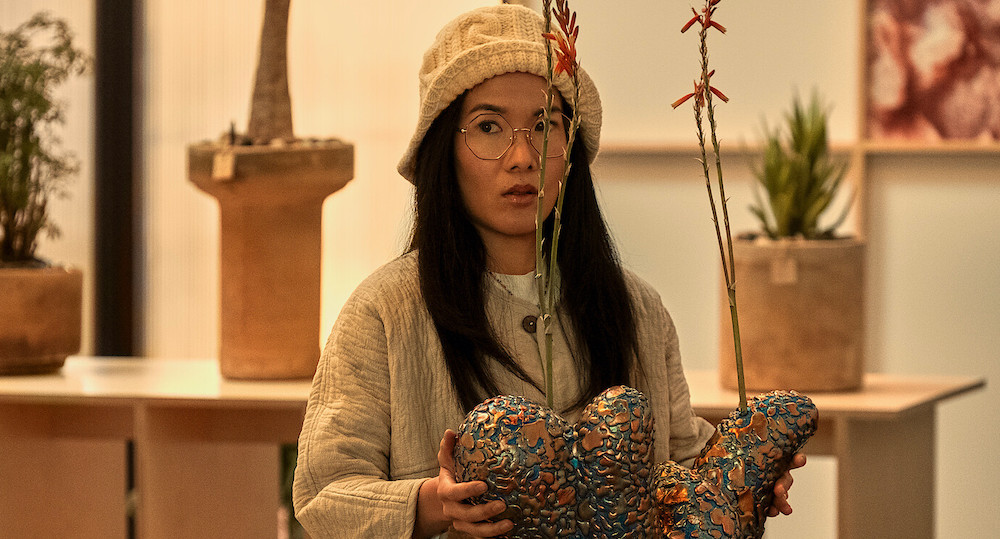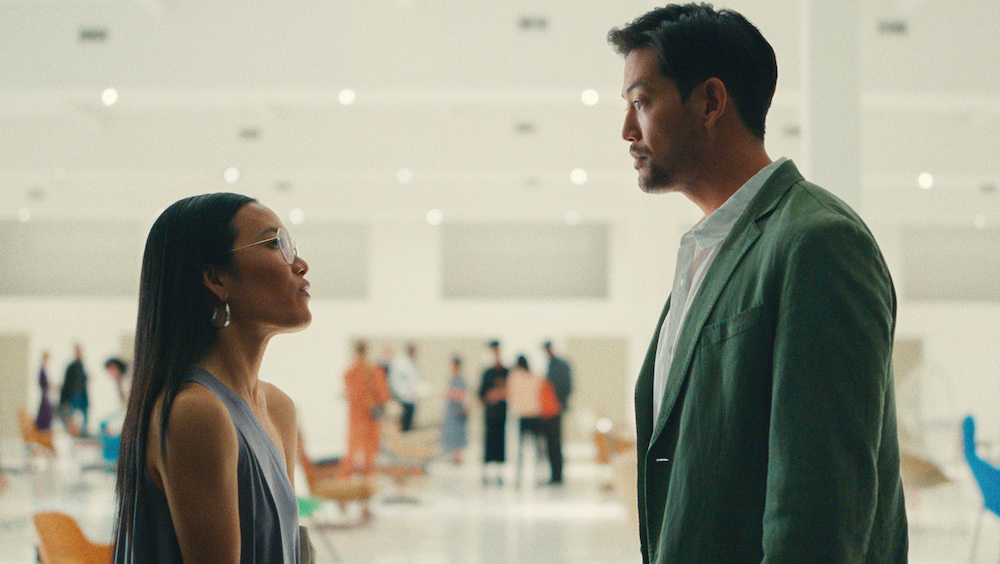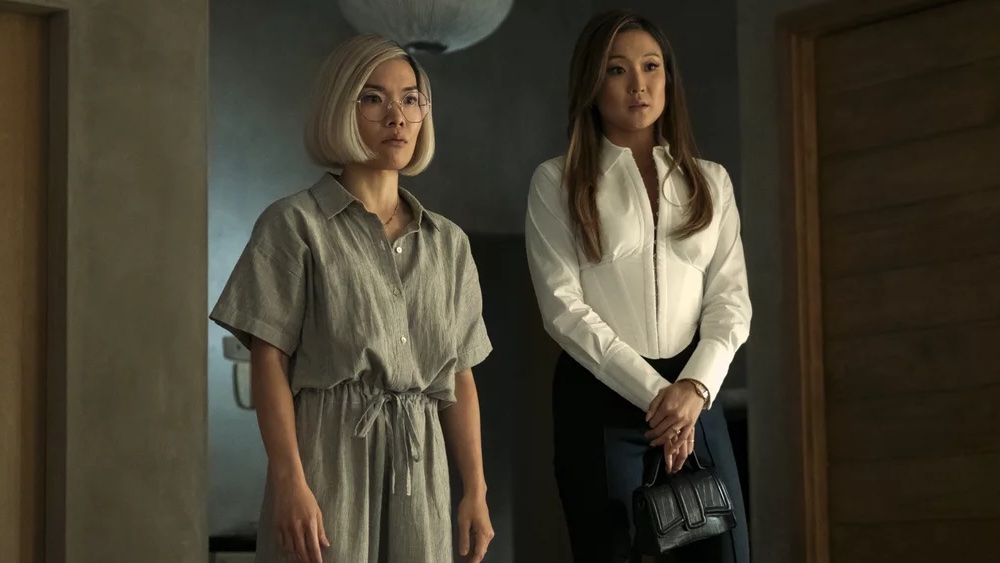
Beef is great drama. It’s as if creator Lee Sung Jin and his team took a few familiar elements from mono e mono thrillers, such as Duel and Changing Lanes, to tell an unfamiliar tale. Jin tells a story about identity, mental health, regret, and trauma with both reflection and entertainment value.
Beef, which is a frontrunner for outstanding limited or anthology series at the Emmys, follows Amy Lau (Ali Wong) and Danny Cho (Steven Yeun) as they tear each other’s lives apart following a road rage incident.
Emmy-winning costume designer, Helen Huang, shows how Amy and Danny’s worlds clash and crumble. Huang, who previously worked on The Shrink Next Door and currently works on The Penguin, creates a sense of contrast and inner-life throughout the series. For Amy’s lifestyle, in particular, Huang strikes a compelling dichotomy for the character’s inner rage and outer geniality.
Recently, the costume designer took us behind-the-scenes of Beef and explained a few of her many creative choices.
[Note: This interview has been edited for clarity and length]
Below-the-Line: The show is very much about the past. Danny is stuck in it, while Amy is either hiding or running from it. How’d you want their relationship to their younger years to play into their style?
Helen Huang: With Amy, we wanted her to feel like she has an artistic past. We dressed her in a way to show that she understands how to curate herself as a brand and chooses to wear things in an artistic, calculated manner. And then for Danny, I think in contrast, we tried to make him feel stuck in time. All of his clothes were thrifted, and Lee and I, were really looking at the early 2000s for where Danny’s growth sort of stopped. He is a person who had an identity up until his mid-twenties, and because of how life has been treating him, he got stuck in that spot and can’t move forward in any vision of himself.
BTL: How’d you want to define Amy’s world and the people in it?
Huang: We did try with Amy’s world to show people who might be in the arts, people who might do graphics, and people who have an attachment to aesthetics through their job. Obviously, we wanted Amy and George’s world to feel very hip, even though they live in the valley. My thought was a very Silverlake-y, upscale couple type. So, that’s what we really tried to dress the friends as. Even when Danny comes to their party, he’s almost dressed up in what he feels dressing up is, but that’s definitely not what dressing up is in Amy and George’s world.

BTL: What are some other little details in your mind that make it very specific to LA?
Huang: I don’t know if this is very specific to LA, but crocs. Amy’s whole family wore crocs. Danny and Paul (Young Mazino) in a way are very specific to LA because it’s the LA that people don’t see, like the outer suburbs of LA. Danny himself in a way feels like a lot of the LA guys that I grew up with. When he went to the club, we tried to mimic how the LA guys went to the clubs back in the early aughts. He even had a belt that the showrunner gave him his own personal wardrobe from that time period, because we really did want those small details to be like easter eggs for people to be like, “Oh, I remember that time period when I literally dressed like that.”
BTL: For the party Amy throws, which Danny crashes, how’d you want the extras to help create the mood of unease? Did you have many conversations with the [production designer] Grace [Yun] about how these costumes could play against the sets?
Huang: With Grace, I saw a lot of her mood boards early on and she saw mine. We had a strong correlation to start off with about how we were understanding and seeing this world. I think mostly because it’s the world between Amy and Danny. They’re very personal to me. As an Asian American, growing up, you do have this memory of what people used to dress like and feel like, and then this engagement with different communities now and how they dress. And so, I feel like Grace has sort of the same background or history. When we did start to show each other mood boards and talk, everything was quite similar and aligned.
Grace had this idea of how the lights at Amy’s house. The lights come in, but in these little slivers. It is a brighter atmosphere, but only sections of light to tie into how Amy is as a person, you know? And for me, when I did the white and cream palette for Amy, I was feeling the same way. It’s this person wearing this color that people don’t usually wear because they don’t want to get dirty. It’s a very curated palette, but then underneath, she has all this tension.
I think what Grace tries to do with her environments is to give you a sense of the style but then create these very specific pockets to give you what’s underneath, the psychological tension. I try to do that a lot with the costumes, too. Grace and I, we try to relate them to the environment, but also sort of pull out these pockets of psychological undercurrents in our designs.

BTL: When you’re starting a project like Beef, what are the key questions you have on your mind about the main characters?
Huang: Again, it was very personal, so I had a lot of really intense images that come to mind when I read the script. I am someone who, as a part of my creative process, looks at a lot of pictures. I do my research and pick out the elements that I think are interesting for these characters. Another component of how I like to approach work is I like to think of what people have seen on TV and in film, and what I feel can be in addition to the conversation.
Especially with contemporary work, I always feel I’m drawn to materials such as Beef. It’s a little off-kilter, you know? And so when I design, I like to pull out the elements too, to strengthen that narrative. There is the bigger idea of what I haven’t seen in characters. For Beef, it’s what I haven’t seen in Asian characters on television. And that was very important to me. What is missing from the narrative and what I could design to add to the narrative?
BTL: How was your experience watching the show and seeing how the actors carried themselves in your costumes?
Huang: You know, I think there are always moments where you think, “Oh, I wish we had a little bit more money.” [laughs] Overall, with Beef, I’m very proud of what appeared on the screen. Working with the actors is a part of the process. When you have all these ideas, they need to align with how the actors portray the characters. There are extensive discussions about how they interpret the material and how they want to project their characters while wearing the costumes.
If your ideas align with how they interpret and want to present their characters, then what you see on screen becomes very organic. I’m proud of how everything looked very organic to their world, even though we aimed to make some clothing decisions more surreal and others more stylish. The same goes for the production design. Although some of the rooms that Grace designed were beautiful yet a bit odd, they felt organic because they fit the written material. The design always has to match the words on the page, basically.

BTL: When people seek your advice or mentorship, do you have go-to advice?
Huang: For specific costume design, my go-to advice is to know more than just about clothes. It’s important to understand fashion history and the history of clothes because it provides context for why things look a certain way. It often parallels historical and technological events that influence aesthetics and people’s fashion choices. So, that knowledge is crucial.
Additionally, be curious about other things. When directors, producers, or showrunners consider hiring you, they look for an informed person. They want someone interested in film, writing, and art. They’re not looking for a robot; they want someone who brings an accumulation of ideas. Being curious about things beyond clothes can actually help you design clothes.
In our industry, it’s a slow process. In the beginning, it may feel incredibly challenging and impossible to reach your desired level, but persist and remain humble. Understand that every job you get brings you a step closer to where you want to be. Observe the people in the positions you aspire to and learn from them, even if you’re in a job that doesn’t fully interest you. Every job teaches you something valuable about engagement.
One of the significant things I focused on, both in the show and in recent years, is how much access we have to people’s lives and how we can examine their lives as a whole through platforms like Instagram. When researching Amy and contemplating her character, I thought about how people brand their businesses on Instagram and how that relates to their personal branding. It’s easy to peek into people’s daily lives and conduct that research. You can see the differences between individuals, even if they have similar color palettes, based on how they present themselves on social media.
This accessibility and the way people live their lives so publicly have influenced discussions around costumes. There’s a recognition that people are starting to look more and more similar because of easy access to inspiration. It has become increasingly difficult to find organic subcultures like punk or skateboarding, which were prevalent in the past.
BTL: As a costume designer, do you find that sameness sad when you’re walking down the street?
Huang: A little bit, but also quite fascinating [laughs]. My approach is always to acknowledge the impact of technology and what is happening and to observe without being scared. However, I do draw upon the subcultures I experienced when I was younger, and they will always be important to me. I try to incorporate elements of that into my designs. Nowadays, trend cycles are so fast that it’s challenging to keep up. When designing contemporary films, if you try to match every trend, your film might end up looking insane.
Beef is now available to stream on Netflix.





